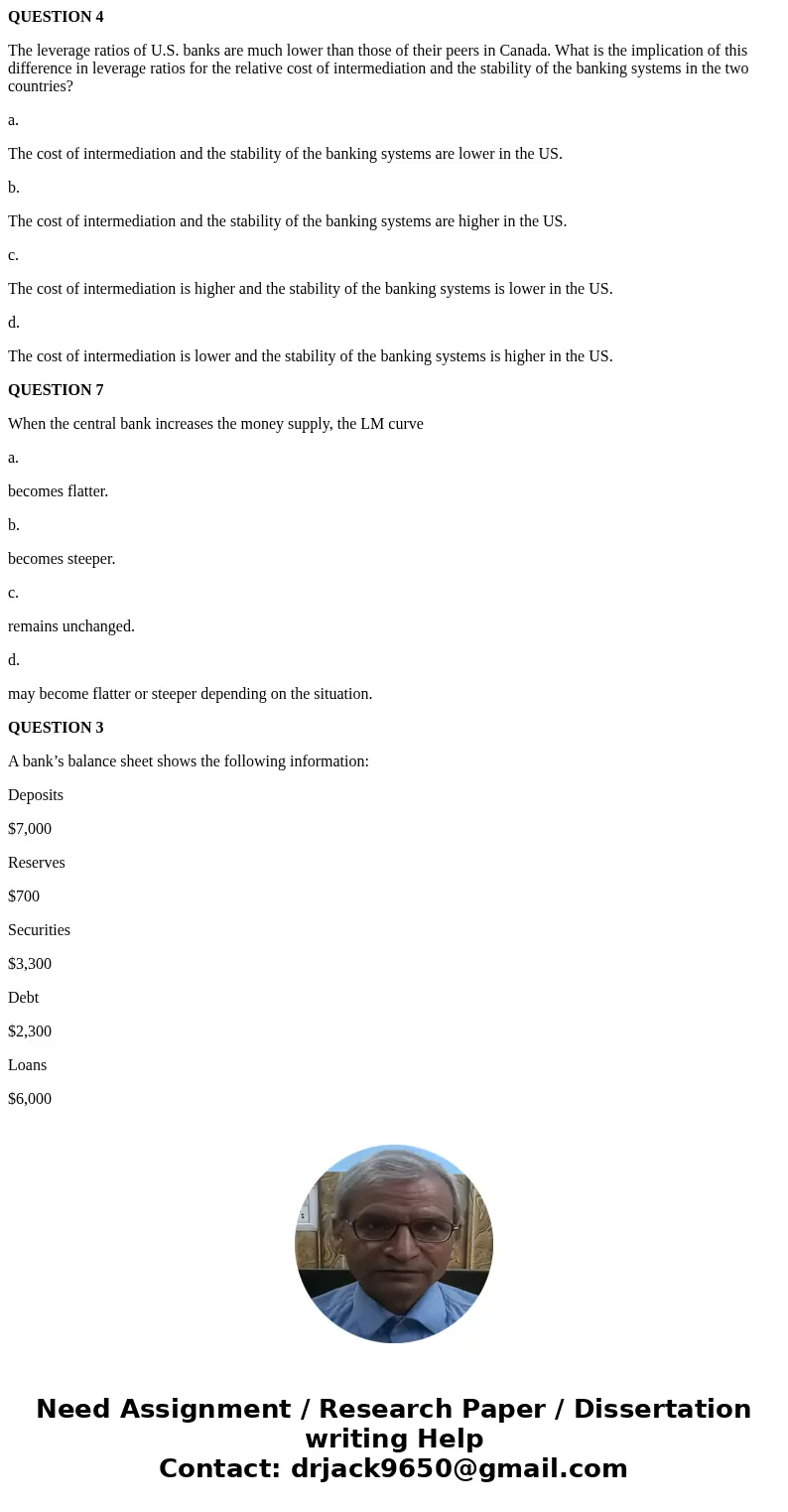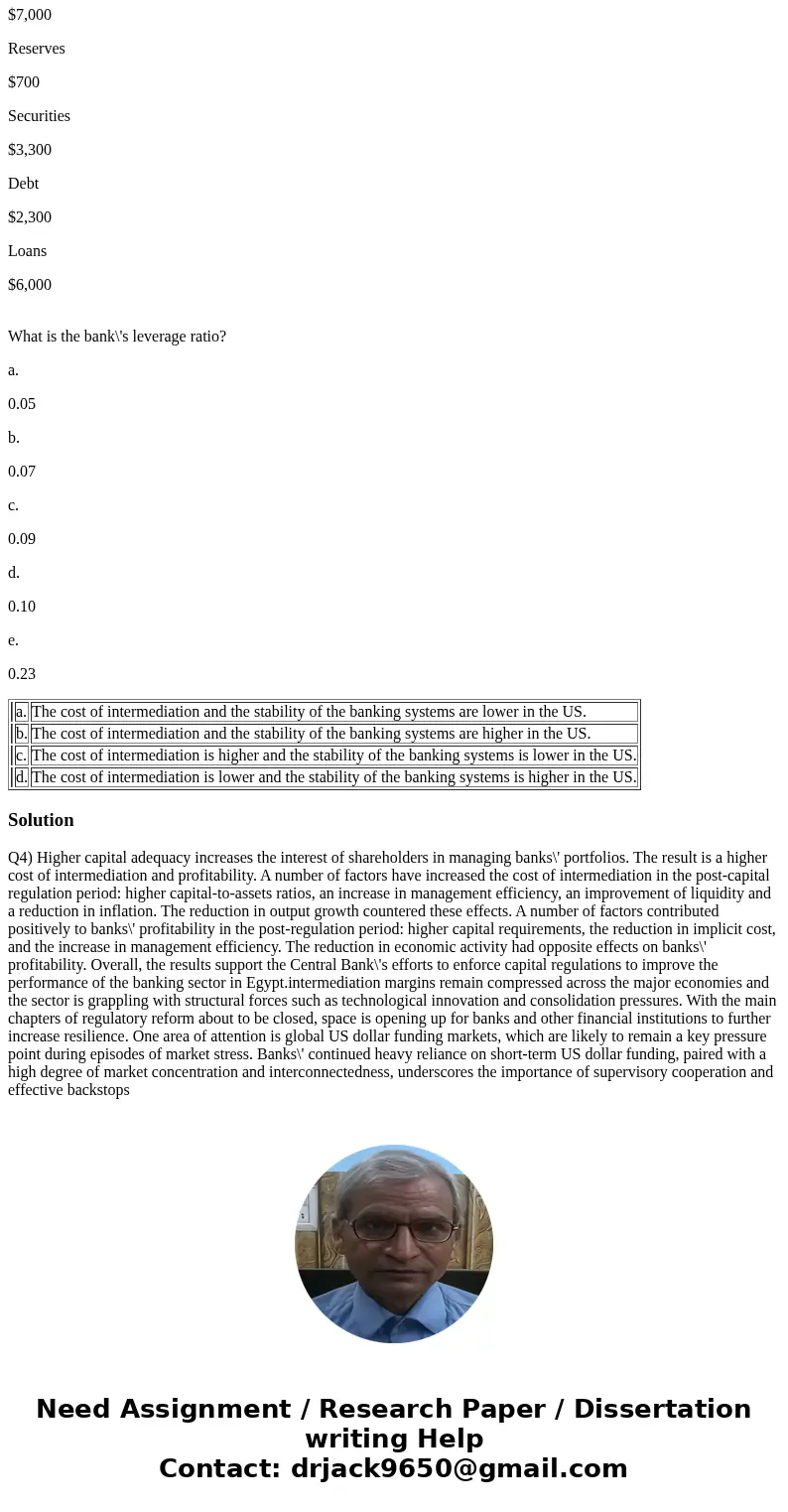QUESTION 4 The leverage ratios of US banks are much lower th
QUESTION 4
The leverage ratios of U.S. banks are much lower than those of their peers in Canada. What is the implication of this difference in leverage ratios for the relative cost of intermediation and the stability of the banking systems in the two countries?
a.
The cost of intermediation and the stability of the banking systems are lower in the US.
b.
The cost of intermediation and the stability of the banking systems are higher in the US.
c.
The cost of intermediation is higher and the stability of the banking systems is lower in the US.
d.
The cost of intermediation is lower and the stability of the banking systems is higher in the US.
QUESTION 7
When the central bank increases the money supply, the LM curve
a.
becomes flatter.
b.
becomes steeper.
c.
remains unchanged.
d.
may become flatter or steeper depending on the situation.
QUESTION 3
A bank’s balance sheet shows the following information:
Deposits
$7,000
Reserves
$700
Securities
$3,300
Debt
$2,300
Loans
$6,000
What is the bank\'s leverage ratio?
a.
0.05
b.
0.07
c.
0.09
d.
0.10
e.
0.23
| a. | The cost of intermediation and the stability of the banking systems are lower in the US. | |
| b. | The cost of intermediation and the stability of the banking systems are higher in the US. | |
| c. | The cost of intermediation is higher and the stability of the banking systems is lower in the US. | |
| d. | The cost of intermediation is lower and the stability of the banking systems is higher in the US. |
Solution
Q4) Higher capital adequacy increases the interest of shareholders in managing banks\' portfolios. The result is a higher cost of intermediation and profitability. A number of factors have increased the cost of intermediation in the post-capital regulation period: higher capital-to-assets ratios, an increase in management efficiency, an improvement of liquidity and a reduction in inflation. The reduction in output growth countered these effects. A number of factors contributed positively to banks\' profitability in the post-regulation period: higher capital requirements, the reduction in implicit cost, and the increase in management efficiency. The reduction in economic activity had opposite effects on banks\' profitability. Overall, the results support the Central Bank\'s efforts to enforce capital regulations to improve the performance of the banking sector in Egypt.intermediation margins remain compressed across the major economies and the sector is grappling with structural forces such as technological innovation and consolidation pressures. With the main chapters of regulatory reform about to be closed, space is opening up for banks and other financial institutions to further increase resilience. One area of attention is global US dollar funding markets, which are likely to remain a key pressure point during episodes of market stress. Banks\' continued heavy reliance on short-term US dollar funding, paired with a high degree of market concentration and interconnectedness, underscores the importance of supervisory cooperation and effective backstops


 Homework Sourse
Homework Sourse